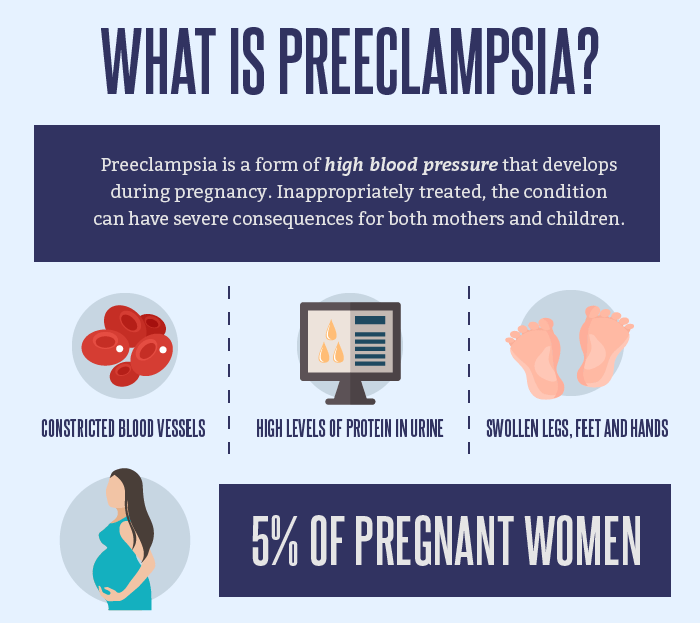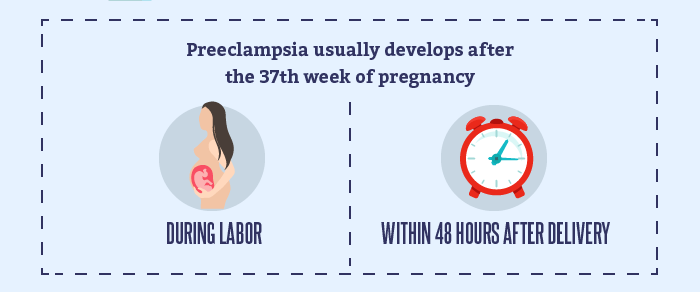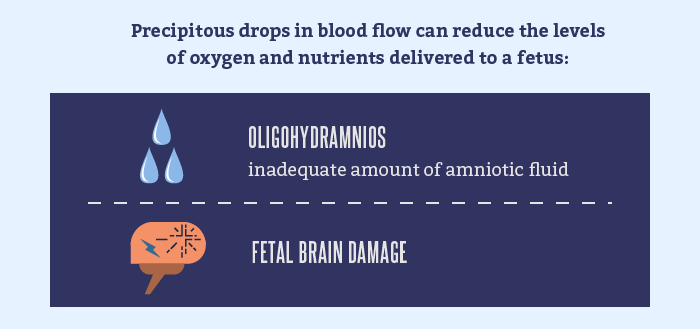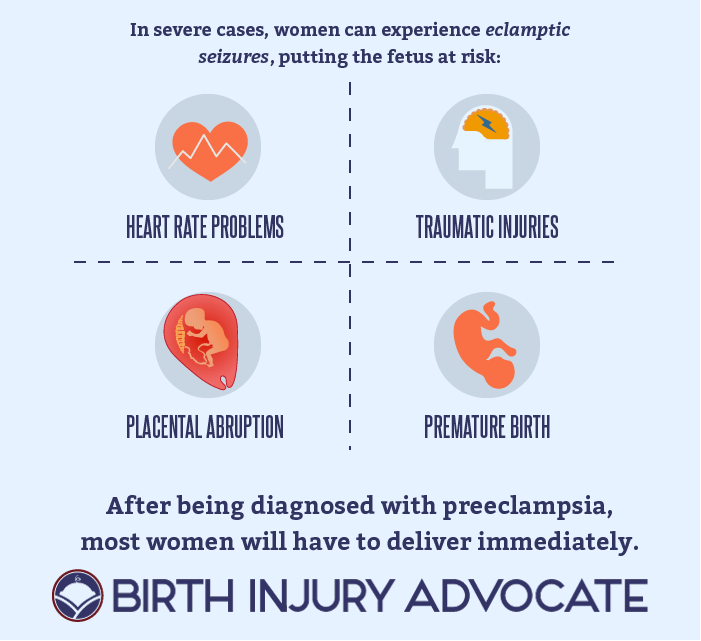Preeclampsia is a form of high blood pressure, diagnosed only in pregnant women, that can pose significant risks if treated improperly.
- Free birth injury lawsuit consultations
- Experienced team of dedicated attorneys
- If we don’t win, you pay nothing
Learn more about pursuing justice for your family by contacting our medical malpractice attorneys now.
Obstetricians have a legal responsibility to protect the lives and health of mothers and their children.
"Excellent Lawyers." Laurence was a strong voice for my family.
Preeclampsia is a form of high blood pressure that only pregnant women develop. While there’s no cure for preeclampsia, the condition can be managed effectively – if it’s diagnosed appropriately. But undiagnosed, or mismanaged, cases of preeclampsia can lead to harm for both mothers and unborn children.
What Is Preeclampsia In Pregnancy?
Doctors define preeclampsia as high blood pressure in pregnant women who have never experienced high blood pressure before. The condition constricts blood vessels, which means less blood is able to reach a mother’s internal organs. That can lead to organ failure in very severe cases, but it also decreases the amount of blood that is able to reach the fetus.


Women with preeclampsia often have high levels of protein in their urine as well. This condition is known as proteinuria, and can be a sign that a mother’s organs aren’t working properly.
Preeclampsia is surprisingly common. In fact, around 5% of women will develop the condition at some point during pregnancy. But the fact that preeclampsia is common should not blind us to the condition’s significant risks.
When Does Preeclampsia Start?
In most pregnant women, preeclampsia begins relatively late, usually during the third trimester and often after the 37th week of pregnancy.

It’s rare for preeclampsia to develop before the 20th week of pregnancy, according to the American College of Obstetricians and Gynecologists. When preeclampsia begins before the 32nd week of pregnancy, it’s known as early-onset preeclampsia. Some women even develop preeclampsia during labor. In other cases, the condition can develop within the 48 hours after a child’s delivery.
Who Is At Risk Of Developing Preeclampsia?
Some women are more at risk of developing preeclampsia:
- first time pregnancies
- pregnant teenagers
- women over the age of 40
- obese women
- diabetes
- blood clotting disorders
- autoimmune disorders
- multiple pregnancies
- family history of preeclampsia
While preeclampsia is technically defined as high blood pressure in women who have not experienced high blood pressure in the past, a history of hypertension is considered a risk factor for the pregnancy complication.
Early Signs Of Preeclampsia
Most obstetricians will regularly check a mother’s blood pressure for indications of preeclampsia. A blood pressure of 140 / 90 or more is generally considered abnormal, and could necessitate treatment. Doctors also test the urine of pregnant women, looking for increased levels of protein, which can be another main indicator of preeclampsia.
Some women will also notice associated symptoms of the condition, like:
- Shortness of breath
- Swollen feet, legs and hands
- Abdominal pain
- Extreme nausea and vomiting
- Reduced or no urine
- Alterations in reflex response
- Changes in vision (like floaters or blurred vision)
- Sudden weight gain (caused by fluid retention)
- Severe headaches
- Dizziness or disorientation
Experiencing any of these symptoms is enough to warrant immediate medical care, but some women with preeclampsia will feel perfectly fine, despite their high blood pressure. That’s why receiving routine blood and urine tests from your obstetrician is the best way to proactively diagnose preeclampsia and decide on an appropriate treatment.
Why Is Preeclampsia Dangerous?
In mothers, preeclampsia can lead to widespread organ damage, effects that often threaten the health of an unborn child. Researchers call the more serious symptoms of preclampsia “severe features.” For obvious reasons, these complications can negatively impact a mother’s health, but they can also put the health of an unborn child at risk:
- Seizures
- Stroke
- Heart failure
- Temporary blindness
- Liver bleeding
- Pulmonary edema – an accumulation of fluid in the lungs
Thankfully, these more serious preeclampsia risks are rare.
How Can Preeclampsia Affect A Baby?
Even in the absence of maternal complications, preeclampsia can seriously harm a developing fetus. During pregnancy, high blood pressure can interfere with the way blood reaches the placenta, starving a fetus of the oxygen and nutrients it needs to develop. The fetus may not grow adequately as a result.

Decreased blood flow can also reduce the amount of amniotic fluid surrounding the fetus. This condition, known as oligohydramnios, can increase the risk for numerous pregnancy complications:
- fetal trauma, since the fetus isn’t well-protected from external shocks
- umbilical cord compression, and thus a further drop in oxygen
- infections
With severe cases of preeclampsia, placental abruption becomes possible. This happens when the placenta peels away from the uterine wall prematurely, cutting of the fetus’ source of oxygen and nutrients. Placental abruption can also cause serious bleeding.
When Does Preeclampsia Become Eclampsia?
Eclampsia is a potential complication of preeclampsia, marked by one or more seizure during pregnancy. Researchers used to believe that preeclampsia was a condition that came before eclampsia, but now we know that seizures are just one of the significant complications that can occur in women with preeclampsia.

Eclamptic seizures are extremely serious. In rare cases, eclampsia can lead to coma, permanent brain damage or even death – both in the mother and her child. Eclampsia is most common during labor and delivery, or within the first 48 hours after delivery, according to Medscape. Women with preeclampsia are also at an increased risk of developing HELLP syndrome after delivery.
HELLP Syndrome
HELLP syndrome is a condition that some, but not all, women with preeclampsia will develop. HELLP is marked by three symptoms that usually occur together:
- Hemolysis (or the breakdown of red blood cells)
- Elevated Liver Enzymes
- Low Platelet Count (platelets are fragments of blood cells that help in clotting)
While HELLP syndrome is especially common after a child’s delivery, pregnant women can also present these signs, and may be at an even greater risk of experiencing preeclampsia consequences than other women.
Can Preeclampsia Be Treated?
In practice, there’s only one way to treat preeclampsia and eclampsia: deliver the baby.
Of course, this may not be possible when preeclampsia is diagnosed early in a child’s development. Thus the treatment for preeclampsia will largely depend on how far along the pregnancy is.
Treatments For Mild Preeclampsia
For women who are diagnosed at 37 weeks or more, most obstetricians will choose to induce labor. In some cases, a cesarean section will be the more appropriate choice.
Women who are diagnosed earlier than 37 weeks may be hospitalized for continual monitoring, or will have to monitor their own blood pressure at home. This is more common for mild cases of high blood pressure, and a doctor will likely advise the mother to stay in bed and restrict her activity. Complete bed rest, however, probably isn’t a good idea, since it can increase the risk of blood clots.
Most women are also asked to count the number of times the fetus kicks, which helps track their baby’s activity level. Patients who stay at home will have to go to the doctor frequently for blood pressure and urine tests, as well as sonograms. If preeclampsia symptoms worsen, or there’s another sign that the baby isn’t doing well, most women will be hospitalized and have to deliver.
Treatments For Severe Eclampsia
When the effects of preeclampsia are severe, the vast majority of women are immediately hospitalized. Obstetricians usually administer transfusions of magnesium sulfate, which is used to prevent seizures. For women who are relatively early in their pregnancies, the doctor may actually attempt to speed up fetal development artificially. Normally this means being prescribed corticosteroid drugs, which can accelerate the growth of an unborn child’s lungs.
In any event, both mother and child should be monitored with extreme care. As in cases of mild preeclampsia, if doctors notice any signs that the condition is beginning to get worse, or that the baby isn’t thriving, delivery will be indicated. This is true no matter where a mother is in her pregnancy, which is why preeclampsia is a leading cause of prematurity in babies.



